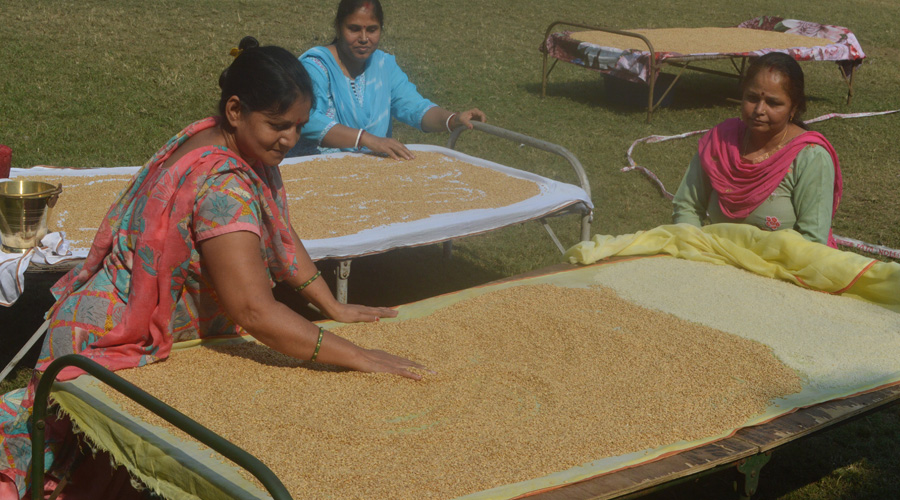About two decades ago, V. Malleshwaramma, a woman farmer in her mid-forties with a small farm, would double up as a footloose labourer. Today, she heads an all-women, organic farmers’ company with 250 shareholders in Andhra Pradesh’s Kadapa district, aggregating and processing an array of pesticide-free farm produce — from ragi to paddy to perishables — and sending it to big cities like Hyderabad. What began as a self-help group running on a thrift fund grew in size and transitioned into a robust collective after relentless hard work, training and exposure. The group is part of a growing social enterprise, Sahaja Aharam, which is a federation of 60 collectives and producer companies with nearly 10,000 farmers scattered over Andhra and Telangana.
Cut to Balangir, western Odisha’s once-impoverished and out-migration district: Hundreds of women members of self-help groups are running micro, small and big enterprises as part of the state’s Mission Shakti initiative, a convergence of rural livelihoods missions. A women’s empowerment programme that began in 2001 is now a separate state department with the government outsourcing its services and goods to the women SHGs across Odisha, enrolling nearly 8.5 million women members. In Balangir, the SHGs now provide an array of services and run multiple enterprises — from a running cafeteria to managing a government-run guest house to producing mid-day meals to operating a roaring handloom unit to agro-allied activities, transforming groups that were once mere thrift fund managers into social enterprises.
Women there are also handling the urban waste management — from doorstep garbage collection to production of compost to selling it in the open market. Travel to Kerala, and you’ll be astonished to see the quiet but incredible work that goes on in the Kudumbashree collective, a Kerala initiative for women’s empowerment and poverty alleviation. Women members of Kudumbashree make a steady income from multifaceted activities; they run micro or individual enterprises, or collective businesses with sustainability at their core. In Kerala, women’s neighbourhood groups are building eco-housing and setting up examples in construction.
In Osmanabad, Maharashtra, a 10-year-old self-help group formed by single women has recently graduated into a producers’ company, taking baby steps into a world of cut-throat competition. Vrundavani Patil, the president, lost her husband 10 years ago and set up a group to support single women, from which sprouted this company. She told me that her company can’t be seen as merely an economic enterprise but one that has social responsibilities. It lends support to single women and tries to create economic opportunities that are otherwise hard to come by.
A quiet, if arduous, transformation is happening across India. Hundreds of women SHGs are transitioning into micro or small social enterprises in an antagonistic market economy, providing a national template with umpteen possibilities. The movement is still in its infancy nearly 25 years since SHGs became a serious programmatic imperative. Most of these groups aren’t productive or income-generating. At the last count, about 80 million women are part of SHG networks in India. The problem is that most groups have no access to capital to achieve scale and growth and a level playing field to compete in unfair terrain.
Investing in them should be a national priority; it will yield a bumper socio-economic harvest, as many productive SHGs are demonstrating. India needs a carefully crafted plan for the next three to four decades to make the women SHGs that are part of the national or state rural or urban livelihood missions productive and sustainable. That would usher us into a real double-engine economy.











